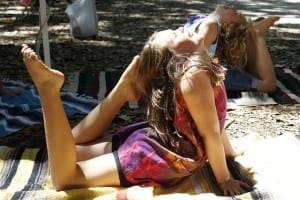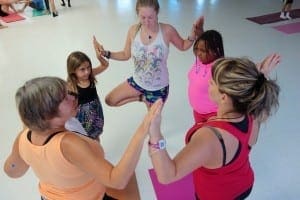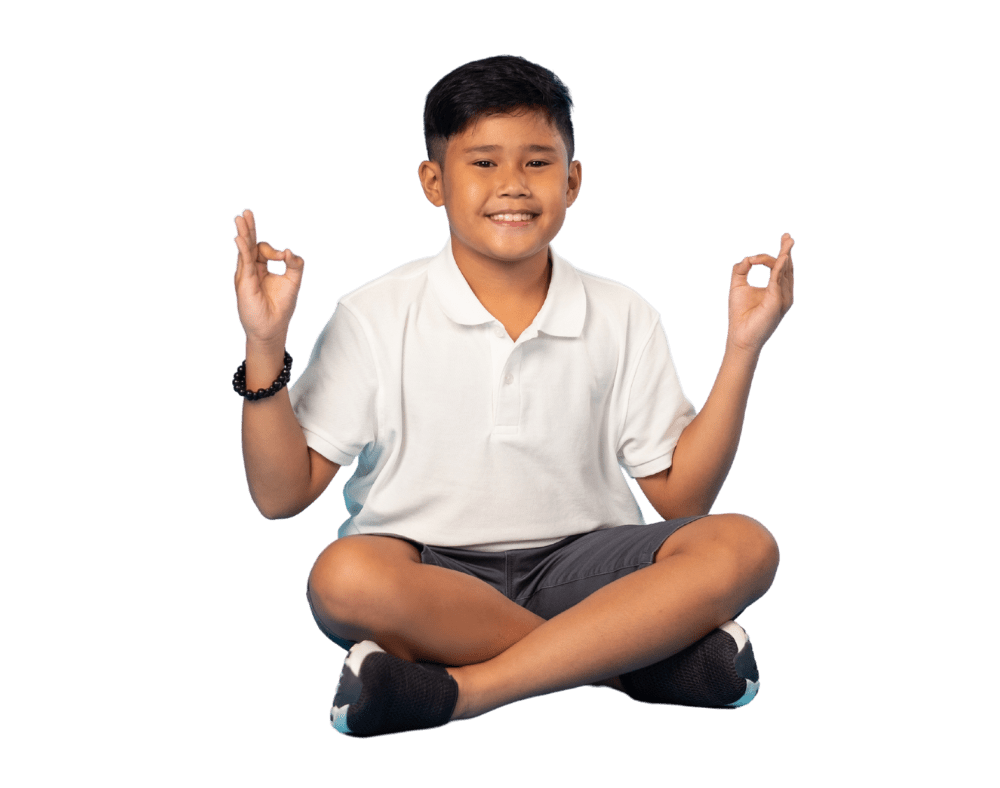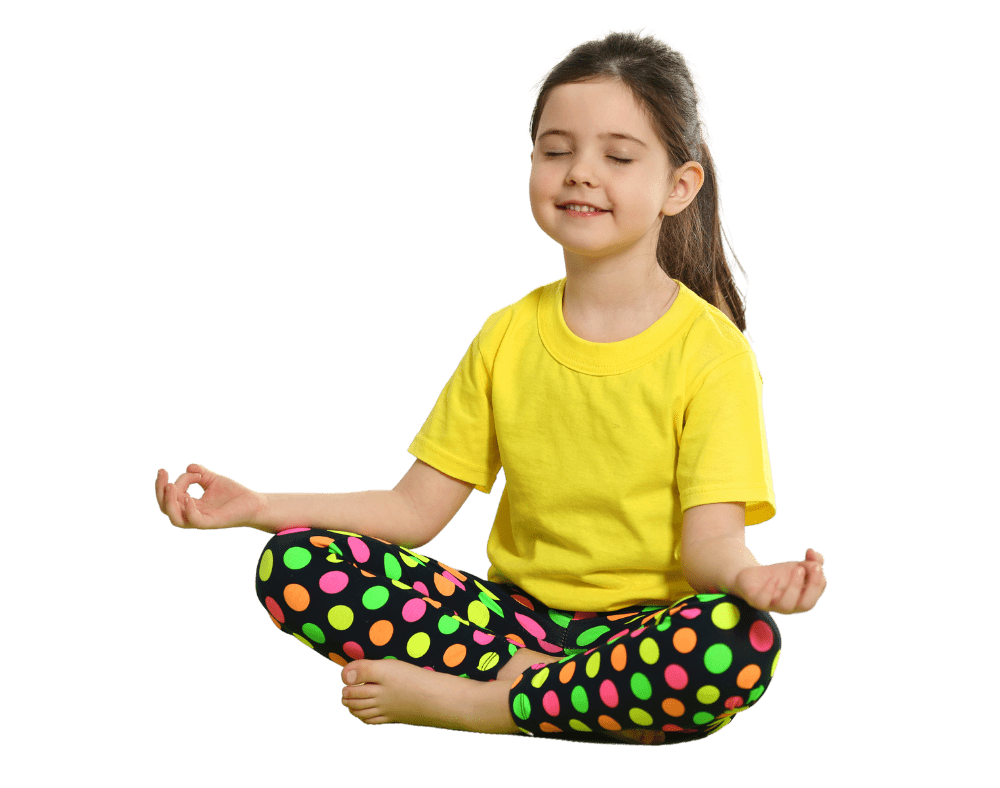
Two of the limbs I like to teach kids are the Yamas and Niyamas (the other limbs include postures, meditation, concentration, and breathing, as well as other practices). Yamas and Niyamas provide lists of behaviors to encourage and sustain a fruitful, happy life. Far from being strictly religious practices, when explained and practiced within a Kids Yoga class, the Yamas and Niyamas are basically rules, like the Golden Rule, to be present, mindful, and whole.
YAMAS – Restraints
Ahimsa – In thought word and deed, act with non – violence
Satya – Be honest, truthfulness
Asteya – Be generous, do not steal
Brachmacharya – Be moderate in all areas of your life
Aparigraha – Have gratitude, be un-attached to expectations
NIYAMAS– Observances
Saucha – Cleanliness of mind and body
Samtosha – Find contentment, trust in the bigger picture
Tapas – Acceptance of uncomfortable parts of life
Svadhyaya – Study and learn about yourself and the world around you
Ishvara Pranidhana – Trust the source in yourself and surrender to the will of the universe
There are countless interpretations and commentaries on the Yoga Sutras available. My favorite interpretation of Patanjali’s Yoga Sutras is The Secret Power of Yoga written by Nichala Joy Devi. This is a woman’s guide to the heart and spirit of the Yoga Sutras. I have found it helpful to spend a little time each day reading and thinking about the Sutras and have found this book helpful. I also encourage you to find a Satsang, or a group, to discuss the Sutras and how to implement them into our daily lives.
As a Sunday school teacher, I enjoy teaching svadhyaya (study and learn about yourself and the world around you) by acting out Bible stories and incorporating yoga postures. I also find that by using books and poems about nature, we can invite nature’s presence into our own lives. The recent gem I found in my local library is a book called The Happiest Tree by Uma Krishnaswami. This book is chock-full of yogic wisdom for adults and children building a road to self-confidence.
To use this book in your yoga class, find a spot to read this book under the shade of a tree. Ask the kids to sit in padmasana (Lotus pose) pretending to grow roots into the earth, while they listen to the story. While
Cat – Marjaryasana helps massage the belly and spine. This pose warms the abdomen and stretches the back as well as the torso.
Cobra – Bhujangasana strengthens the spine. It firms the buttocks, stretches the chest, lungs, shoulders, and abdomen. Cobra can relieve sciatica and be therapeutic for asthma.
Frog – Mandukasana stretches the inner thighs, groin, and hips. By allowing the chest and shoulders to expand, it relieves stress, anxiety, and depression. Offer the kids the idea that their yoga mat is a lily pad.
Tree – Vrksasana increases balance, focus, memory, and concentration. Tree also strengthens ankles and knees. When practicing Tree, it is fun to ask the kids to circle up and practice standing as a forest of trees. Allow the branches to rest gently on the neighboring tree and close their eyes. Make sure to do the tree on both sides!
Lotus – Padmasana increases mobility and releases tension. A common meditation pose, Lotus steadies the body so the mind will follow.
Finish your class by asking the kids to share what their favorite part of the story was. I like to do this while enjoying a healthy snack. The following recipe is one of my favorites. It is nut-free, dairy-free, and fun to make because there is no need to bake!
Sunflower Sassies
2c GF whole rolled oats pulsed in a food processor until fine
½ c coconut flour
1 c GF rice crisp cereal
½ c chia and flax blend
½ tsp salt
In a mixer with the paddle stir the first 4 ingredients, for about one minute.
½ c maple syrup
½ cup molasses( this is why they are sassy)
1 tsp vanilla
½ Tbsp. coconut oil
½ c sunflower seed butter
½ c chocolate chips
Add the 6 remaining ingredients. Stir until the mixture becomes crumbly and press into a 7×11 wax paper-lined pan. Chill for ½ hour in the freezer. You can cut and individually wrap with yarn or serve family style.
Like what you read here? There’s so much MORE to explore and learn with Kidding Around Yoga. Check out our website for our live and online teacher trainings, Yoga Alliance-approved 95-hour RCYT trainings, specialty online courses, original music, merchandise, and beyond! KAY even offers an online course all about yogic philosophy (Raja Yoga Training).




